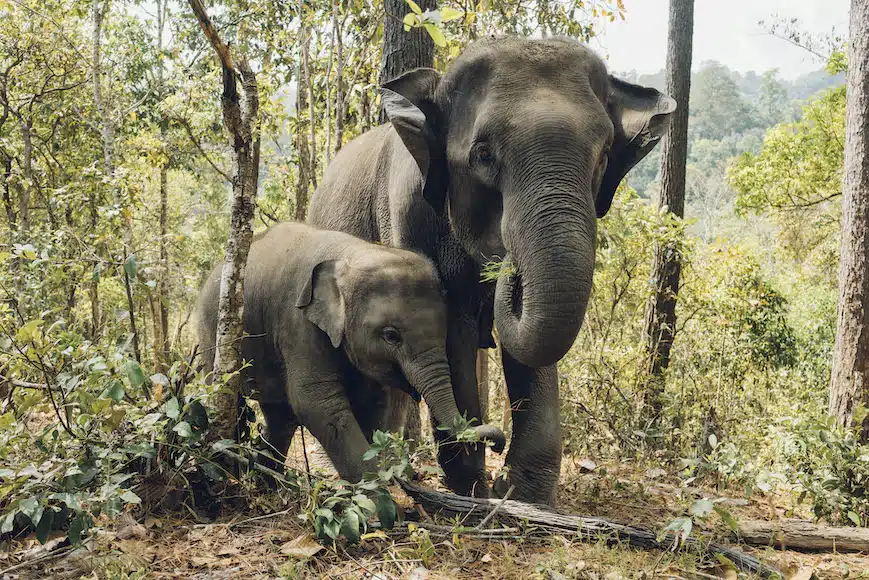Wondering what went right this week in the conservation world? We’ve got you covered with our Conservation Optimism Round-Up! We are collating stories of optimism from around the globe so that you never miss your dose of weekly motivation.
1. For the first time in 75 years, hatchlings of an endangered sea turtle have been discovered off the coast of New Orleans
“Wildlife experts at the Breton national wildlife refuge have documented more than 53 turtle crawls and two live hatchlings that were navigating towards the sea, Louisiana’s Coastal Protection and Restoration Authority announced in a press statement this week. The news was particularly uplifting for environmentalists because the hatchlings were Kemp’s ridley sea turtles, an endangered species that also happens to be the world’s smallest sea turtle.”
For the first time in 75 years, hatchlings of the world’s smallest sea turtle species, Kemp's ridley sea turtle, have been discovered on Louisiana islands!#conservationoptimism #seaturtles #endangeredspecies https://t.co/WdN7iB3ZWw
— SCB (@Society4ConBio) August 22, 2022
2. Myanmar designates two new protected areas for over 13,000 acres of tropical rainforest
“The Ministry of Natural Resources and Environmental Conservation on Monday designated the land of 4,988 acres in Paletwa Township as Kayat protected public forest area and the land of 8,400 acres in Gangaw Township as Pawle-Watchipa protected public forest area. The designation of the protected areas was aimed at conserving watershed areas, mitigating climate change, protecting biodiversity, ensuring soil conservation and fulfilling the needs of local residents, the ministry said.”
#Myanmar has recently designated two new #ProtectedAreas, conserving over 13,000 acres of tropical #forests!#forest #watershed #nature #wildlife #biodiversity #conservationoptimism #news #ourplanet #wildlifeconservation #conservation #LetNatureThrive https://t.co/Z7B7EBQ7pG pic.twitter.com/fl7G1Z61P9
— Global Conservation Solutions (@_GCS_) August 24, 2022
3. Cheetahs roaming the Babanango Game Reserve for first time in 200 years
“The cheetah release means a lot for the establishment of Babanango Game Reserve. As we know that cheetahs are scarce in the world, releasing new individuals and expanding cheetah conservation areas means more of this species on the continent. We are making history in returning these majestic cats. The dream of rewilding Babanango is slowly getting fulfilled every day.”
As part of a #rewilding program in #SouthAfrica, #Cheetahs have been #reintroduced to Babanango Game Reserve for the first time in over 200 years!#cats #bigcats #nature #wildlife #biodiversity #news #conservationoptimism #conservation #LetNatureThrive https://t.co/ecJbW0Y4eC
— Global Conservation Solutions (@_GCS_) August 28, 2022
4. Wolf populations booming across the Alps
“The number of wolf packs in the Alps has jumped by over 25% in just one year, the Swiss-based wolf-protection association Gruppe Wolf Schweiz (GWS) said on Monday. They described the current population growth as “exponential,” rising from around 250 packs in 2021 — most of them in the border region between Italy and France — to over 300 this year.”
5. How ‘fog collecting’ is providing water for Spanish trees
“The EU-backed Life Nieblas project (niebla is Spanish for fog) is using fog collectors in Gran Canaria in Spain’s Canary Islands, and Portugal, to improve degraded landscape and fuel reforestation. On Gran Canaria, the goal is to capture 215,000 litres of fog and dew water a year to repopulate 35 hectares (86 acres) with 20,000 laurel trees in the Doramas Forest, an area at high risk of desertification as a result of fires.”
Dealing with drought: Innovative @LIFEprogramme project by @CREAF_ecologia has #cardboard #cocoons & #fog collection to boost native trees restoring #CanaryIslands forest
— Question Mark (@markday331) August 26, 2022
Cause for #ConservationOptimism#GenerationRestoration https://t.co/uj9fTGsUzD
6. Record number of hen harriers fledge in England
“Natural England and its partners recorded 119 hen harrier chicks successfully fledging from nests across uplands in County Durham, Cumbria, Lancashire, Northumberland and Yorkshire. It is the first time in more than a century that the number added to the population has exceeded 100 young birds, the agency said.“
Some good news #ConservationOptimism https://t.co/7bByTRoRig
— Simon Hedges (@simonhedges64) August 26, 2022
7. New protected reserve for Indian elephants
“The Indian elephant is found in 16 states in the country and is showing an increasing trend across it’s distributional range. The population of the animals had become critically low in 1992. The new reserve will be spread over an area of 1,197 square kilometres in Agasthiyamalai.”
Have a story to share for our weekly round-up? Use #ConservationOptimism on Twitter, Facebook, LinkedIn and Instagram!


